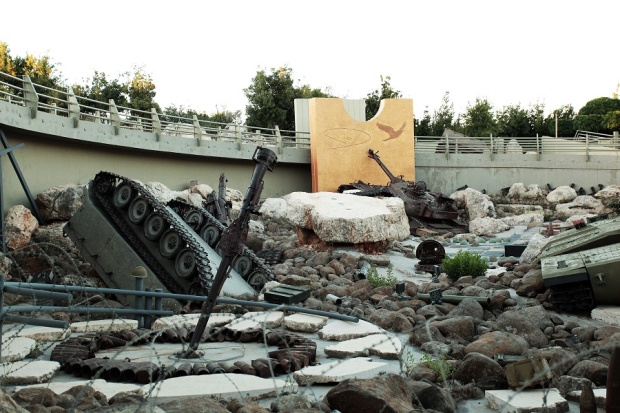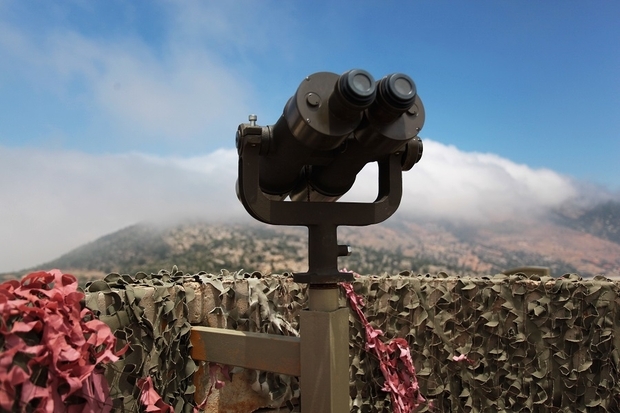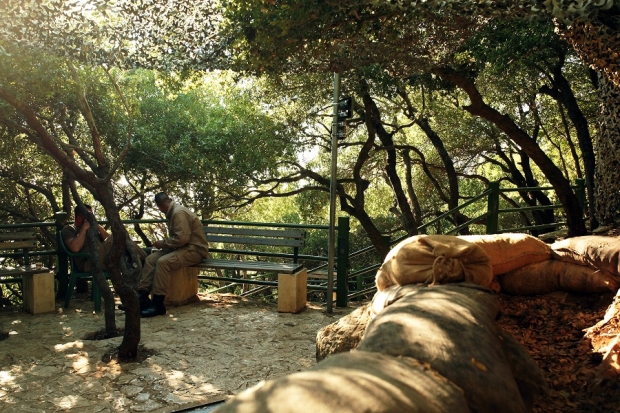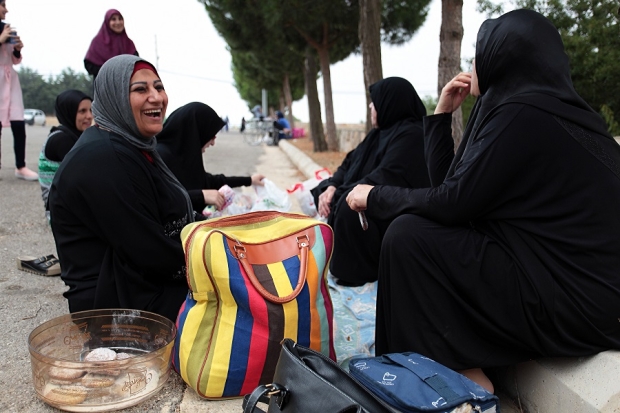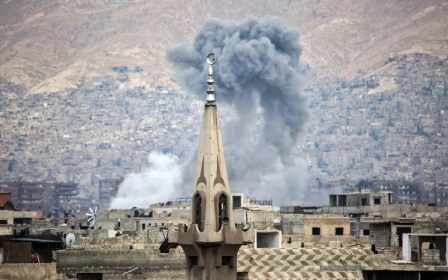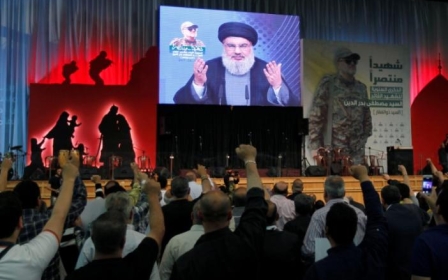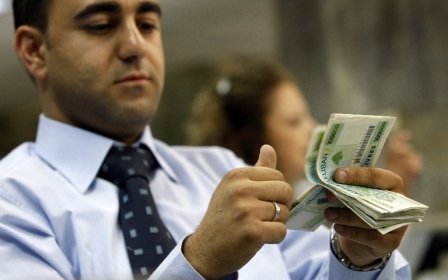Hezbollah museum: Shrine to resistance or a dying image?
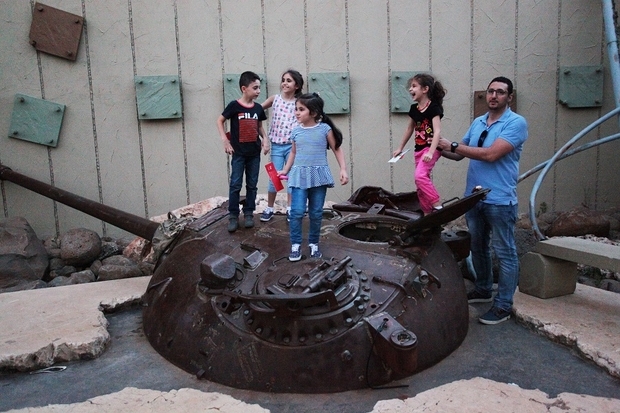
AIN BOUSWAR, Lebanon - Among the cedar groves and citrus trees of southern Lebanon lies the small village of Ain Bouswar, where one can find a rather particular museum that is about kilometre or so away.
'I wish Hezbollah was less hypocritical'
- Hassan Chamoun, videographer from Beirut
Welcome to Mleeta, star visitor attraction of Hezbollah, the Lebanese Shia political party and militia. The entrance is uncannily like that of a theme park.
There are big illuminated signs that bellow, "Mleeta Tourist Landmark, where the land speaks to the heavens," and before a rising sloped entrance, there is a ticket booth and information panel (weapons and fireworks are prohibited).
There is the less-theme-park-like addition of security guards that are wearing what look a lot like military fatigues. They dive for cover whenever a camera is pointed anywhere near them. There will clearly be no Mickey Mouse-style selfies in front of the gates.
For the admission fee of 4,000 Lebanese pounds ($2.70), visitors can witness everything engineered to hammer home the message of the "Resistance" against Israel. Lebanon's Party of God has fought the southern neighbour - referred to as "the enemy" - since its formation in the 1980s.
A conceptual garden
The exhibits are undoubtedly eye-opening, although it often feels more like an outdoor sculpture gallery than a military history museum.
The thought of paying a single Lebanese lira to Hezbollah annoys me
- Hassan Chamoun, videographer from Beirut
Attractive landscaping surrounds "The Abyss," full of booty apparently left behind in southern Lebanon after Israel's withdrawal in 2000, and after the 33-day July War in 2006.
The 3,500 square metre pit is full of rusty tanks, on which the odd lizard basks, and surrounded by barbed wire, through which butterflies flutter. Twisted metal pipes surround the vehicles, as if they are trapped in webs.
A spiral walkway surrounds the pit, so visitors appear to trample over the paraphernalia in the chasm below. Next to the twisted remains of a Yasour helicopter, a sign proudly describes how it was "brought down by the Resistance in the Marmeen Valley during the July 2006 war".
Further ahead, "The Pathway" is a 650m walkway allegedly marking the line where Hezbollah fighters positioned themselves against Israeli forces.
It would feel like a woodland walking trail - except that opposite the rest stop, complete with drinking fountain, bins and benches, is a display of waxwork model soldiers launching surface-to-surface missiles.
Facilities are of the sort that encourage five-star reviews: clean toilets, a children's play area, and a well-stocked gift shop (snap band bracelet bearing the face of Hezbollah Party secretary Hassan Nasrallah, anyone?)
Mleeta has had 1.6 million visitors through its doors since opening in 2010, although nearly half of those were in its first year.
A dying image
Even in the wild world of propaganda, there is reason to question Mleeta's accuracy as a portrait of Hezbollah in 2017. A report released in March by the International Crisis Group, a policy think tank, says Hezbollah has evolved from "a ‘party of the oppressed' and a Lebanon-based and centred ‘resistance' movement standing up to Israel," into a powerful regional force.
In other words, it has moved on from how it is sold at Mleeta.
"I wish Hezbollah was less hypocritical: they teach their followers how one should side with the oppressed not the oppressor, but what they do is totally the opposite, siding with a ruthless oppressor, Assad, regarding Syria," Chamoun tells Middle East Eye.
Hezbollah was small but now they have become strong and they will not fall
- Ruba, 15 years old
Although Chamoun's roots are in Lebanon's south and he is proud of the resistance against Israel, he refuses to pay Hezbollah any money.
"At that time, like the quasi-totality of people from the south, I respected them. Not anymore," he says. "I wouldn't [go back for a visit] because of the nature of its place and how the money paid to the museum very probably goes to fighters. The thought of paying a single Lebanese lira to Hezbollah annoys me."
Hezbollah forces have been backing President Bashar al-Assad in Syria, publicly at least, since 2013. There have been reports that the group is also training Iraqi militants and have been active in Yemen as well. Hezbollah has denied its involvement in both countries.
Ruthless occupier
Many Syrians across the region have turned against Hezbollah. The ICG report said they are seen in parts of Syria as a "ruthless occupier," especially pro-opposition Syrians who say they would avoid the site because of Hezbollah fighters' role backing President Assad.
They accuse the Lebanese party of supporting a dictator, besieging civilians, and employing brutal battleground tactics.
It is our role to preserve the memory for the next generation to know about the history
- Ahmad Mansour, Mleeta's press manager
"Of course I would boycott places like Mleeta," says Hussein Akoush, a Syrian journalist from rural Aleppo province, who now lived in Gazientep, south Turkey. "Why would I pay money to Hezbollah?"
Akoush's view of the party, like that of many Syrians, has changed dramatically.
"In 2006, I was excited to watch Hezbollah, the party which kills our enemies and smashes their tanks," he says. "Though I was a child then, and had no idea about politics, I was proud of what the national TV was proud of, the same with people around me. We were just like puppets. When Hezbollah's intervention started in Syria, I saw how they supported Assad, then how they committed violations against civilians. They became killers in my opinion, after being heroes for a while," says Akoush.
But Mleeta guides disagree.
"Even Syrians on the opposition side are attracted here," claims Abu Abdallah, who has worked as a guide at Mleeta since its opening. "They know this place is for Hezbollah, of course."
"Syrians love Hezbollah, still," pipes up his colleague Mohammed Malaki, an enthusiastic 26-year-old IT student who volunteers at Mleeta. "[The Islamic State] do not talk to us but some [Syrian] people came to Mleeta to know us because they do not have another way to know Hezbollah," he insisted.
Ahmad Mansour, Mleeta's press manager, admits some dissent. "Some people yeah, you know... Arab people, they are emotional. Some people, they know the martyrs [Hezbollah fighters killed in Syria], who are maybe 20-something... and they talk."
He won't expand on what "talking" involves.
"You can separate between the cultural side and the military side, we have to," he says. "Hezbollah's role in Syria is to defend Lebanon, to protect Lebanon, to save Lebanon."
They became killers in my opinion, after being heroes for a while
- Hussein Akoush, a Syrian journalist from rural Aleppo province
If that is the case, what is more important now: Israel, or the threat of extremist infiltration from Syria? They are the same, according to Mansour. "The resistance is everywhere, as in Sayyed Hassan's [Nasrallah] speeches. We are in Syria but that does not mean that Israel can enter Lebanon."
So, as tasteless as it might be, would Hezbollah need a similar Syria "tourist landmark," displaying booty captured from al-Qaeda's branch in Syria, and the Islamic State?
"Maybe, why not," laughs Mansour, with a shrug. "Actually, it is our role to preserve the memory for the next generation to know about the history."
Hezbollah will not fall
Other visitors insist Hezbollah's role in Syria is not a distraction from a legitimate defence against Israel.
"Hezbollah was small but now they have become strong and they will not fall," says 15-year-old Ruba, from Sur. "Mleeta is still relevant - it is showing the real face of Hezbollah. They need to make more monuments to show what they are doing to protect Islam and Lebanon from all sides - from threats in Syria, from Israel."
"In south Lebanon, we lived our childhoods under missiles. The Resistance [Hezbollah fighters] protected us against Israel," she tells MEE, in the front seat of a coach in Mleeta's car park. "We do tours so people remember the past and understand. They cry when they come here."
Regional and military distractions
Expansion plans for the site - a cable car to a former Israeli outpost, for example - have not yet materialised. The official reason is a lack of investors, although Mansour also hints at "the situation in Lebanon and Syria" causing issues. Hezbollah has been a little busy in recent months.
Spurred on by President Trump's calls to stunt Iranian influence in the region, rhetoric has escalated over the possibility of a fresh war between Hezbollah and Israel, 11 years after the July 2006 conflict.
According to Mansour, Mleeta would be a prime target. Would the Party of God not worry about the destruction of their pride and glory? At Mleeta, the mood is unsurprisingly hubristic.
"Yes, I think they would try to destroy it," says Mansour. A year after the museum's opening, Hassan Nasrallah was satisfied that Hezbollah was already winning the propaganda war, Mansour says.
"Sayyed Hassan was told that we had had 750,000 visitors in the first year," continues Mansour. "He was asked, what would happen if the site was destroyed? And he said, well, 750,000 people now know the truth, and they can spread it. The enemy can try to destroy it."
As the sun sets blood orange over the hills, Um Mohammed's coach party has left, but the security guards in desert fatigues are still mingling. Whether or not Mleeta is made for show is up to visitors to decide.
This article is available in French on Middle East Eye French edition.
Middle East Eye propose une couverture et une analyse indépendantes et incomparables du Moyen-Orient, de l’Afrique du Nord et d’autres régions du monde. Pour en savoir plus sur la reprise de ce contenu et les frais qui s’appliquent, veuillez remplir ce formulaire [en anglais]. Pour en savoir plus sur MEE, cliquez ici [en anglais].


